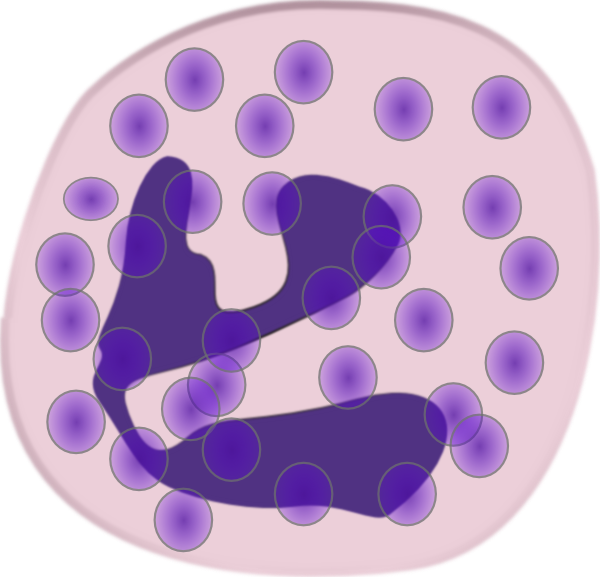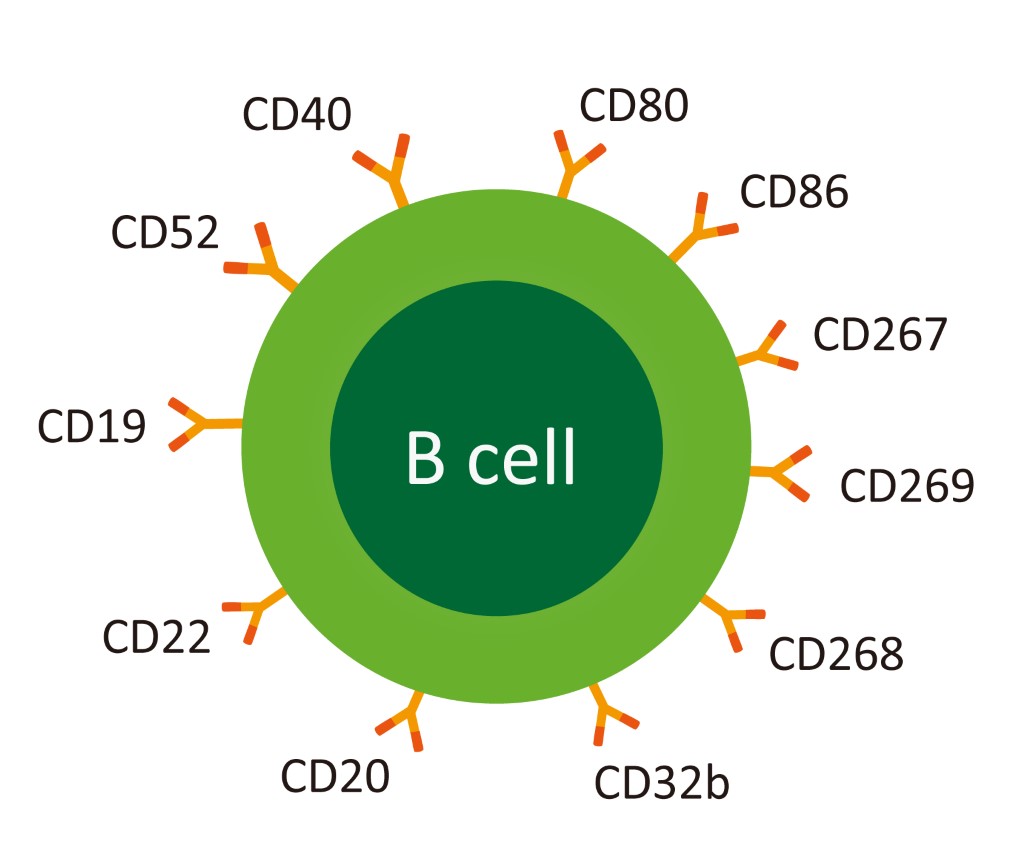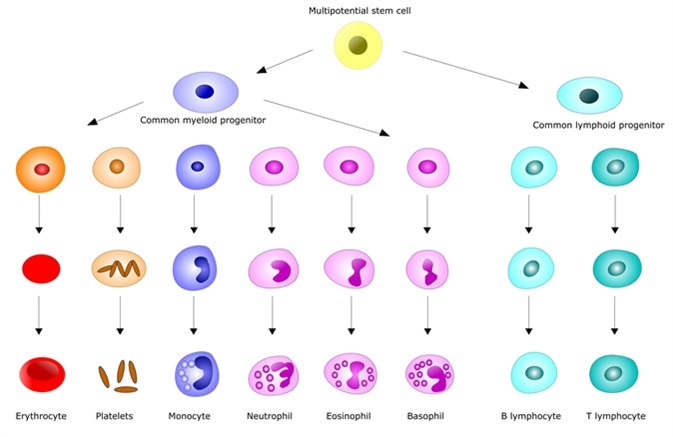BS5005 - Infection & Immunity (TERM 2 | WEEK 2 - Cells of the anatomy and the immune system)
Key learning objectives list:
- LO1 - Describe the major components of the host defence against infection
- LO2 - Understand the cells associated with innate and adaptive immune response
- LO3 - Understand where the cells of the immune system develop and where they are located
LO1 - Describe the major components of the host defence against infection
The immune response can be split into 2 separate components.
Key points of the innate immunity
- Present from birth
- Non-antigen specific
- Rapid response
- No memory cells
- Cellular & humoral mechanisms
Key points of the adaptive immunity
- Memory cells
- Antigen specificity
- Slow response
- Cellular & humoral mechanisms
LO2 - Understand the cells associated with innate and adaptive immune response
Innate immunity
Monocytes
- 10% of the white blood cells
- Heterogenous (differentiate into multiple subsets of cells)
- Classical: in the blood, circulate and migrate where they differentiate into macrophages
- Non-classical: minority, patrol surface of endothelial cells and contribute to tissue repair
- Short lifespan (~24 hours)
Macrophages
- Derive from monocytes
- Tissue resident macrophages present in almost all tissues
- Relatively long-lived, undergo division at site of infection
- Classical (M1 - inflammation), Non-classical (M2 - repair), Regulatory
Neutrophils
- Most abundant white blood cells
- Early inflammatory response mediators
- Recruited rapidly to site of infection
- Granular, containing enzymes and microbicidal molecules
Dendritic cells
- Professional Antigen Presenting Cells (APCs)
- Found in skin and mucosal barriers
- Able to migrate through the bloodstream
- Link between the innate and adaptive systems (due to presentation of antigen to lymphocytes)
Mast cells
- Mature mast cells are found in tissues, skin and mucosal epithelia
- Large histamine filled granules released when cell activated
- Key to immune response against parasites
- Key role in inflammatory and allergic response
Eosinophils
- Majority are phagocytic
- Migrate from blood to tissue when required
- Presence in mucosal lining
- Defend against parasites
Basophils
- Majority are non-phagocytic
- 1% of all leukocytes
- Normally absent in tissues
- Release pharmacologically active substances from their granules
- Major role in allergic response
NK cells
- Derived from common lymphoid progenitor cells
- Large granular lymphocytes
- Directed against tumour cells and virally infected cells
- Not high antigen specificity
- Part of the innate lymphoid cells (ILC's)
Adaptive Immunity: Lymphocytes
T cells
- Develop in the thymus
- Mature and enter the peripheral tissues
- Express a receptor that is specific to an antigen (TCR - T Cell Receptor)
- CD4+ T helper cells: Divide rapidly and secrete cytokines that "help" B cells, macrophages and cytotoxic T cells to become active
- CD8+ T 'killer' cells: Release cytotoxic granules to kill infected target cells
- Regulatory T cells: Suppress the immune response.
B cells
- Mature and enter the peripheral tissues
- Express a receptor that is specific to an antigen (TCR - T Cell Receptor)
- CD4+ T helper cells: Divide rapidly and secrete cytokines that "help" B cells, macrophages and cytotoxic T cells to become active
- CD8+ T 'killer' cells: Release cytotoxic granules to kill infected target cells
- Regulatory T cells: Suppress the immune response.
B cells
- Develop in the bone marrow
- Express receptors specific to an antigen (BCR - B Cell Receptor)
- Recognise naive intact antigen particles
- Plasma cells: Enlarge and proliferate, secrete immunoglobulins specific to antigen (antibodies)
- Memory cells: Long living, activated by binding of a specific antigen.
LO3 - Understand where the cells of the immune system develop and where they are located
All leukocytes derive from hematopoietic stem cells (hematocytoblast) in the bone marrow. The stem cell differentiates into either a common myeloid progenitor (innate) or a common lymphoid progenitor (adaptive).
The are 2 primary lymphoid organs whose job is to generate lymphocytes (adaptive) from immature progenitor cells. They are the bone marrow and the thymus.
T cells are sent from a young age to develop in 'school' - the thymus.
B cells, however, are 'home-schooled' - bone marrow.
The secondary lymphoid organs are the lymph nodes, spleen and MALTS. These are the sites where lymphocytes encounter and respond to antigens. They become activated.
- Antigens entering the tissue are captured by dendritic cells and transported to the lymph node.
- Antigens in the blood stream are processed by the spleen.






:max_bytes(150000):strip_icc()/eosinophil-5a14cf45842b170019df25e4.jpg)
.png/250px-Blausen_0077_Basophil_(crop).png)
/arc-anglerfish-syd-prod-nzme.s3.amazonaws.com/public/APZ72YMI5RH2TH6TFS7MOJ7W3I.jpg)






Comments
Post a Comment